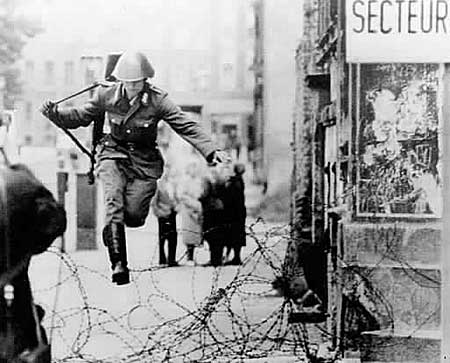Until a few months ago, I lived in an apartment in the Cleveland Park neighborhood of Washington, DC. The building was large and plain, probably built in the 1950s. Living there was a bit like living in a tree house, since our unit was almost as high as the treetops in Rock Creek Park. E. walked the seven minutes to the Metro station, and then took the subway to work. I could take public transit also, but I tended to walk to work, up the hill through the leafy, established residential streets of Cleveland Park. We could walk from our apartment to a large but unremarkable Giant grocery store. Our immediate area was thick with restaurants that we kept saying we were going to try, though we rarely did.
E. flew off to Germany. I finished emptying the apartment, and moved a pile of boxes and suitcases more or less across the street. Brad and Kirsten were on vacation in Australia, and I was the house sitter. The neighborhood was the same, and the adjustment was relatively minor. I was now living with a cat, which made sitting unmolested more of a challenge. Sleeping took getting accustomed to also, as the cat liked to sleep on the bed, and occasionally howled in the night.
Brad and Kirsten returned from Australia, and I moved myself and my pile to my brother-in-law's mostly unoccupied apartment in Crystal City, the area around National Airport. My commute to work increased from 35 minutes to 65 minutes each way, and I wasn't walking to speak of, so for the first time in a long time I embraced reading novels as part of my commute (The Virgin Suicides, The Inheritance of Loss). Crystal City served my purpose, but it is absolutely the last place I would choose to live: an un-gridded mess of hotels and office buildings mushrooming in the airport's shadow. A typical day: Get up, look out the window at eight lanes of traffic. Get ready for work. Exit the unit and look down the unnervingly long hall. Several minutes later, arrive at the end of the hall, where the elevator is. Leave the building, and cross the street. Enter a winding mole tunnel that connects buildings and leads, eventually, to the Metro. Hop on a train, then transfer. Get off at Tenleytown. (The first 45 minutes or so of this trip are largely withough daylight.) Wait for a shuttle, and then ride the shuttle to work. The stroll across the AU campus to my office is plainly the most bucolic element of the day.
Upon arriving in Berlin, E. and I found ourselves in a well-maintained, relatively new apartment in what struck me as a bourgeois neighborhood. The beds were identical to the build in cabinets, which were identical to sofa, which was identical to the desks. Very clean, very sturdy, very orderly. The neighborhood, I'm told, is very "west" (i.e. West Berlin) which is either a good thing or a bad thing, depending on your perspective. It lacks the street life and dynanism of the east, but it's very, very liveable. Looking out the window, there's a little corner market, with fruit displayed outdoors, and tables where people sat and drank their coffee.
Then, after a bit of home hunting, we settled on an apartment to get us through the fall (at least) in Prenzlauer Berg, in the former East. E. has already blogged about the new neighborhood, and I'll let her do some of the talking (see: "West meets East: We have a new apartment"). The neighborhood is chaotic compared to last one, but pleasantly chaotic. Think West Village. Think Sesame Street without muppets. Think sidewalk cafes. Think burly Australian man with tatoos complimenting a black boy on his "nice sword" (a stick). We look out on what used to be the no-man's-land separating East and West Berlin. If you follow this link you'll see a map. The location marked 7 is pretty much where we live. A famous photo of a soldier escaping to the West was taken just down the street (the location marked 2).

Today, no-man's-land is being filled in with buildings, though reminders of the past are everywhere.
Looking out our window, it's easy to see where the buildings were chopped off to clear a path for the permanent wall. In time, I'm sure people will come here and point out where the wall stood, and use the architectural discrepancy to trace the history of the city. (In Vienna, if you're alert, you can tell what was the old walled city and what was built after the medieval fortifications came down just by observing the building styles and the layout of the streets.)

0 comments:
Post a Comment